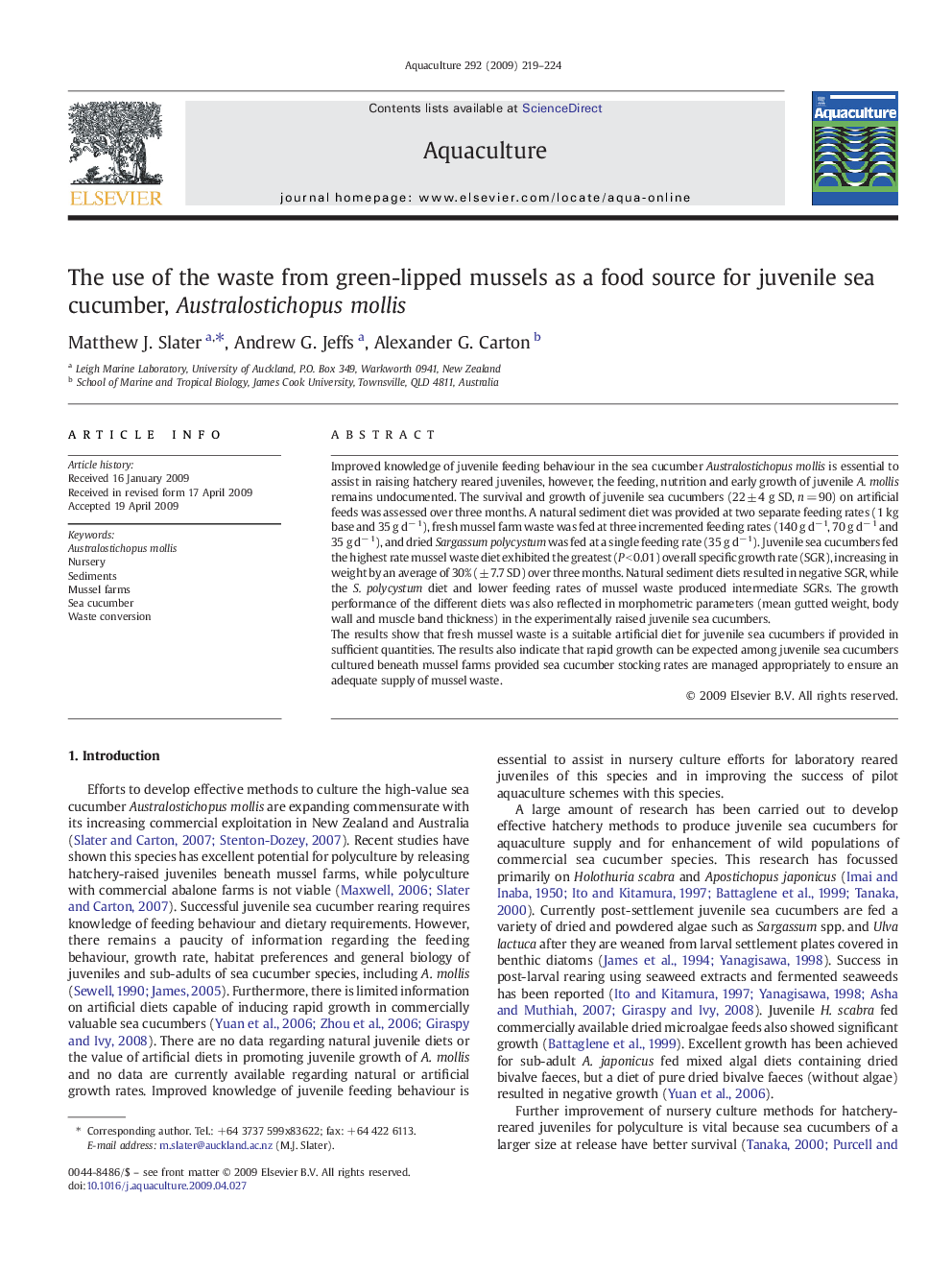| Article ID | Journal | Published Year | Pages | File Type |
|---|---|---|---|---|
| 2423965 | Aquaculture | 2009 | 6 Pages |
Improved knowledge of juvenile feeding behaviour in the sea cucumber Australostichopus mollis is essential to assist in raising hatchery reared juveniles, however, the feeding, nutrition and early growth of juvenile A. mollis remains undocumented. The survival and growth of juvenile sea cucumbers (22 ± 4 g SD, n = 90) on artificial feeds was assessed over three months. A natural sediment diet was provided at two separate feeding rates (1 kg base and 35 g d− 1), fresh mussel farm waste was fed at three incremented feeding rates (140 g d− 1, 70 g d− 1 and 35 g d− 1), and dried Sargassum polycystum was fed at a single feeding rate (35 g d− 1). Juvenile sea cucumbers fed the highest rate mussel waste diet exhibited the greatest (P < 0.01) overall specific growth rate (SGR), increasing in weight by an average of 30% (± 7.7 SD) over three months. Natural sediment diets resulted in negative SGR, while the S. polycystum diet and lower feeding rates of mussel waste produced intermediate SGRs. The growth performance of the different diets was also reflected in morphometric parameters (mean gutted weight, body wall and muscle band thickness) in the experimentally raised juvenile sea cucumbers.The results show that fresh mussel waste is a suitable artificial diet for juvenile sea cucumbers if provided in sufficient quantities. The results also indicate that rapid growth can be expected among juvenile sea cucumbers cultured beneath mussel farms provided sea cucumber stocking rates are managed appropriately to ensure an adequate supply of mussel waste.
